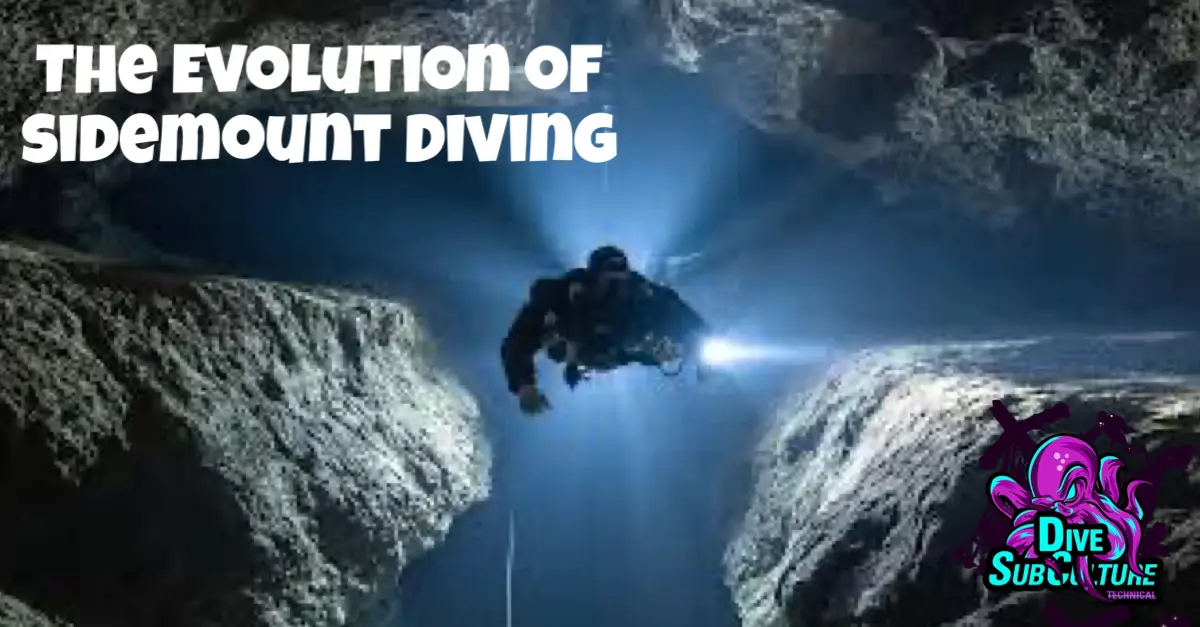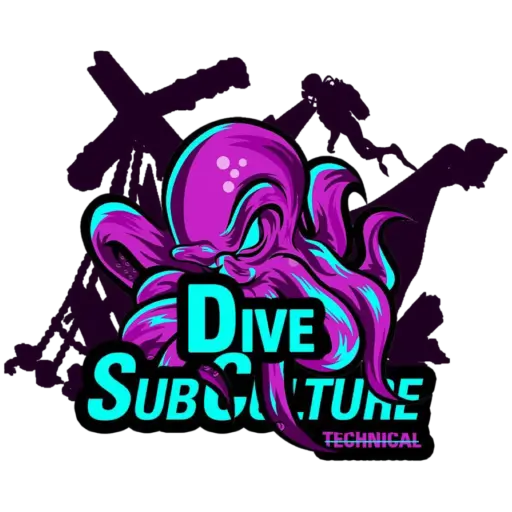Streamlining Your Dive Gear
An exploration of the benefits of sidemount diving, its history, and why it’s becoming increasingly popular in technical diving.
Sidemount diving has steadily gained popularity over the past few decades, especially in the realm of technical diving. Originally developed for cave exploration, this streamlined configuration of tanks and gear is now widely used for both recreational and technical diving. Its flexibility, comfort, and safety features have made it an appealing choice for divers at all levels. This article explores the history, benefits, and reasons behind sidemount’s growing prominence in the dive community.
The Origins of Sidemount Diving
Sidemount diving was born out of necessity. In the 1960s and 1970s, cave divers, particularly in the UK and Florida, needed a configuration that allowed them to navigate tight spaces and explore passages that were inaccessible with traditional backmount setups. Early pioneers of sidemount, such as Mike Boon, recognized the need for increased flexibility, streamlining, and better buoyancy control in confined spaces like caves.
The early sidemount setups were rudimentary, involving makeshift harnesses and bungees to attach cylinders to the sides of the diver’s body. The ability to easily manage multiple tanks, remove and replace them in-water, and carry additional gas for extended cave dives became the core principles that still define modern sidemount diving today.
Sidemount’s Introduction to Open Water and Technical Diving
What started as a niche configuration for cave exploration quickly attracted the attention of open water and technical divers. In the early 2000s, manufacturers began producing specialized sidemount rigs designed for broader applications, and certification agencies started offering formal training for sidemount diving.
For technical divers, particularly those engaged in deep, wreck, or cave dives, sidemount presented numerous advantages over traditional backmount configurations. The ability to carry more cylinders and streamline their placement allowed technical divers to better manage gas reserves, trim, and buoyancy in challenging environments. Furthermore, sidemount’s adaptability and improved redundancy made it a safer option for dives involving decompression, multiple gases, and extended bottom times.
The Benefits of Sidemount Diving
1. Streamlining and Comfort
One of the most immediate benefits of sidemount diving is the increased comfort and streamlined profile it offers. By mounting cylinders along the diver’s sides, it minimizes drag and makes maneuvering in the water smoother. Divers can achieve better horizontal trim, reducing their energy consumption and improving efficiency, particularly in confined spaces like wrecks or caves.
2. Flexibility and Redundancy
Sidemount configurations allow divers to carry multiple cylinders more easily. This flexibility is particularly beneficial for technical divers who need to manage different gas mixes or extend their bottom times. Each cylinder is independently attached, and divers can isolate issues with gas or equipment more easily, enhancing safety through redundancy. The sidemount setup also allows divers to detach cylinders and push them through tight spaces if needed, a feature that proves invaluable in cave diving.
3. Enhanced Gas Management
Sidemount diving inherently improves gas management practices. With cylinders on each side, divers can monitor and switch between tanks more efficiently, ensuring balanced consumption. This method is essential during longer dives or in environments where access to the surface is limited, making sidemount ideal for technical diving where precise gas planning is critical.
4. Accessibility and Ease of Use.
Unlike traditional backmount setups, which can be cumbersome, sidemount systems allow for easier donning and doffing of equipment, both in and out of the water. Divers with limited mobility or those diving from smaller boats often find sidemount much more manageable. On the surface, tanks can be clipped on or off, reducing strain on the diver’s back and shoulders, making it a more accessible option for divers of all ages and physical abilities.
5. Buoyancy and Trim Control
The sidemount system promotes superior buoyancy control and trim. By placing cylinders along the diver’s center of gravity, it helps divers maintain a more neutral position in the water, conserving energy and reducing the need for constant buoyancy adjustments. This control is especially valuable in technical diving, where maintaining optimal buoyancy can make the difference between a successful dive and an aborted mission.
Why Sidemount is Gaining Popularity in Technical Diving
As technical diving continues to evolve, divers are constantly seeking configurations that improve safety, efficiency, and comfort. Sidemount diving meets all these criteria, which is why it has seen a sharp rise in popularity within the technical diving community.
One of the key factors driving this trend is the versatility that sidemount offers. Technical divers often require multiple cylinders for gas management, and sidemount’s ability to handle multiple tanks without compromising diver comfort or mobility makes it an attractive option. In deep or long-duration dives, having access to different gas mixtures (such as Trimix for deep diving or Nitrox for decompression) becomes much easier when using sidemount.
Additionally, as the exploration of deeper and more challenging dive sites becomes more accessible to the broader dive community, sidemount’s redundancy and safety features appeal to divers who want greater control over their equipment. In cave, wreck, and deep diving scenarios, the ability to independently manage tanks and troubleshoot gear issues without relying solely on a backmounted system can enhance a diver’s confidence underwater.
The growing number of training courses and availability of specialized sidemount equipment have also contributed to its rise in popularity. Dive centers like Dive Subculture Technical are offering comprehensive sidemount training programs, providing divers with the skills they need to transition into this configuration, whether for recreational dives or advanced technical expeditions.
Conclusion: Streamline Your Dive Gear with Sidemount
Sidemount diving represents the future of streamlined, flexible, and safe diving. Whether you’re exploring the depths of a cave system, wreck diving, or simply looking for a more comfortable way to manage your gear, sidemount offers unparalleled benefits. As it continues to evolve and adapt to the needs of divers, sidemount will likely remain a dominant choice for technical and recreational divers alike.
For those looking to transition into sidemount diving, the first step is training. Dive Subculture Technical offers a range of sidemount courses designed to equip you with the knowledge and skills you need to master this innovative dive system. Streamline your gear, improve your dive experience, and take the plunge into the world of sidemount diving.







